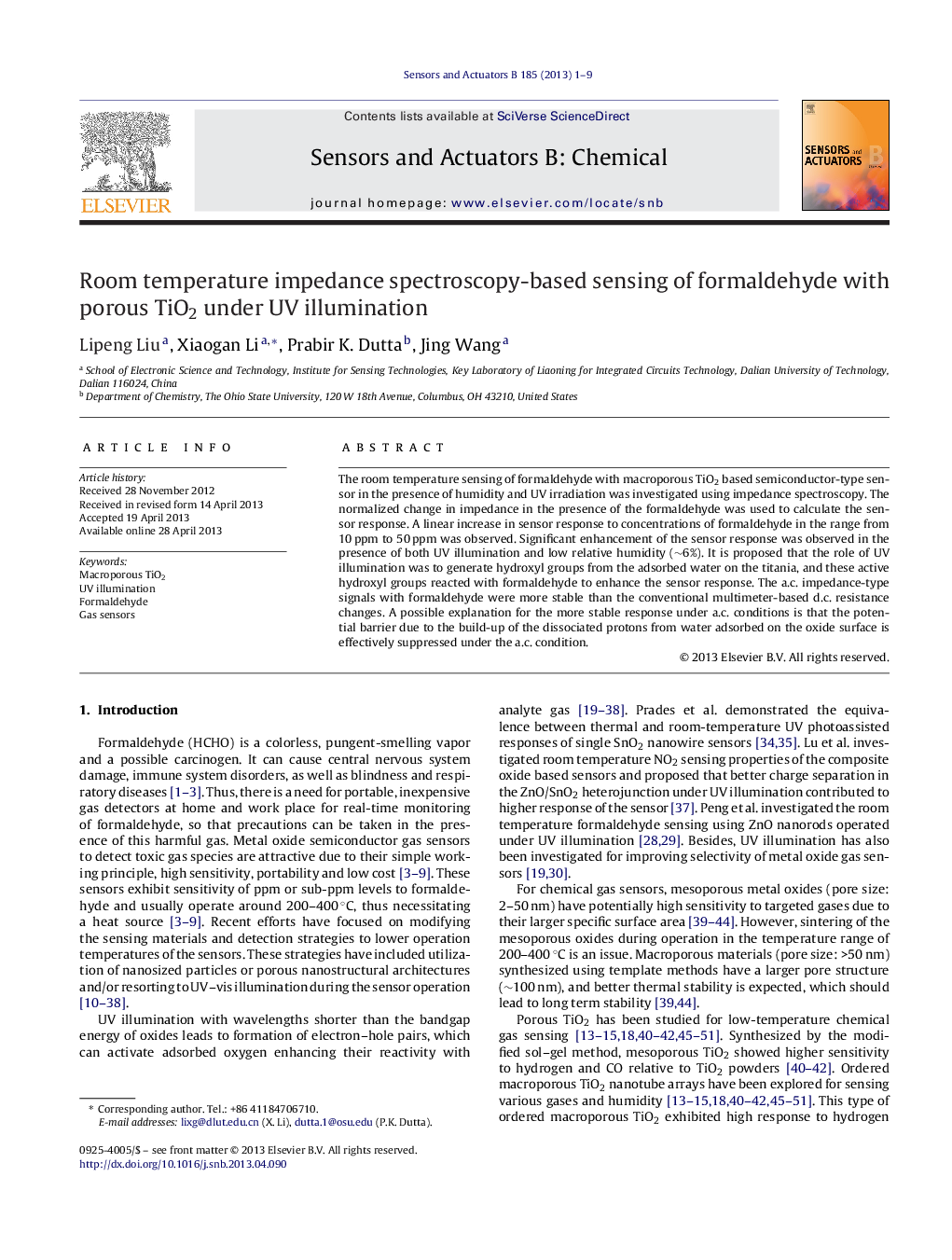| Article ID | Journal | Published Year | Pages | File Type |
|---|---|---|---|---|
| 7148410 | Sensors and Actuators B: Chemical | 2013 | 9 Pages |
Abstract
The room temperature sensing of formaldehyde with macroporous TiO2 based semiconductor-type sensor in the presence of humidity and UV irradiation was investigated using impedance spectroscopy. The normalized change in impedance in the presence of the formaldehyde was used to calculate the sensor response. A linear increase in sensor response to concentrations of formaldehyde in the range from 10Â ppm to 50Â ppm was observed. Significant enhancement of the sensor response was observed in the presence of both UV illumination and low relative humidity (â¼6%). It is proposed that the role of UV illumination was to generate hydroxyl groups from the adsorbed water on the titania, and these active hydroxyl groups reacted with formaldehyde to enhance the sensor response. The a.c. impedance-type signals with formaldehyde were more stable than the conventional multimeter-based d.c. resistance changes. A possible explanation for the more stable response under a.c. conditions is that the potential barrier due to the build-up of the dissociated protons from water adsorbed on the oxide surface is effectively suppressed under the a.c. condition.
Related Topics
Physical Sciences and Engineering
Chemistry
Analytical Chemistry
Authors
Lipeng Liu, Xiaogan Li, Prabir K. Dutta, Jing Wang,
